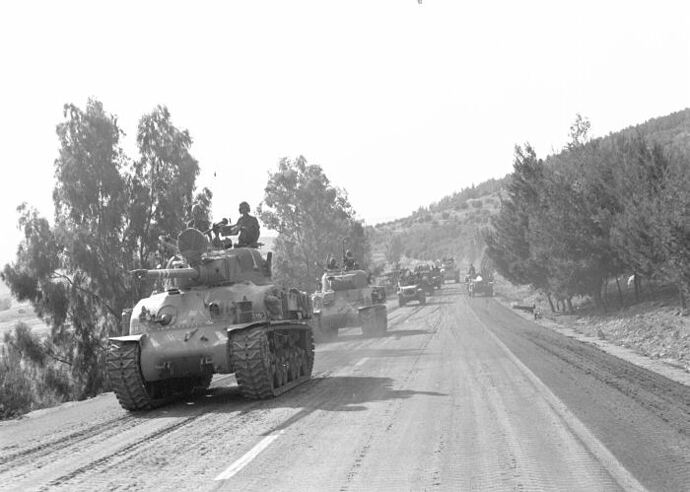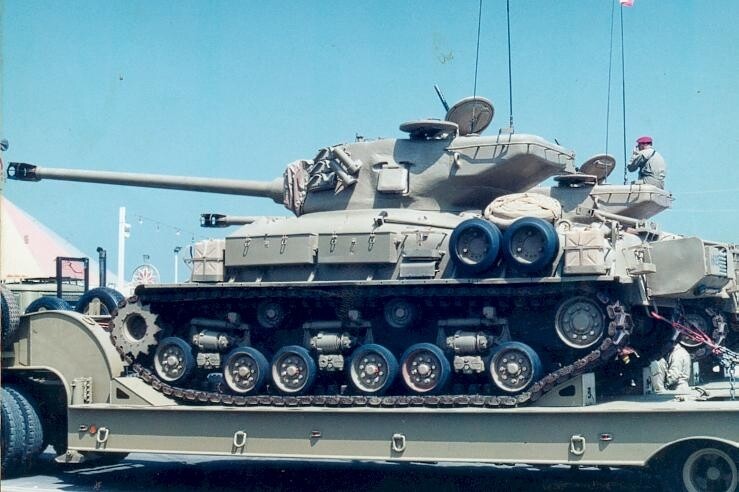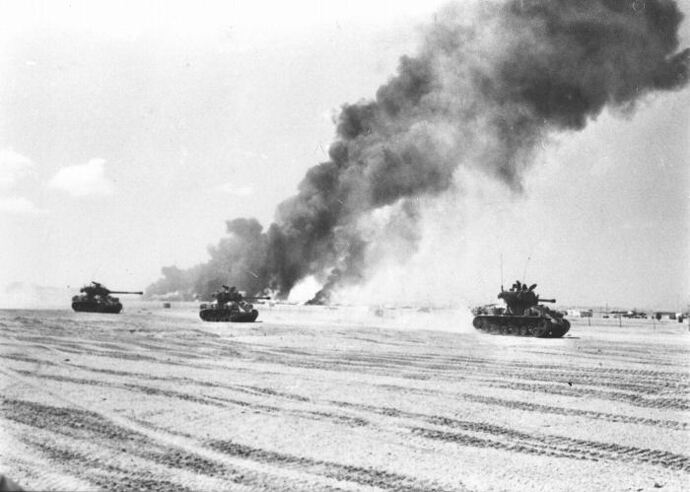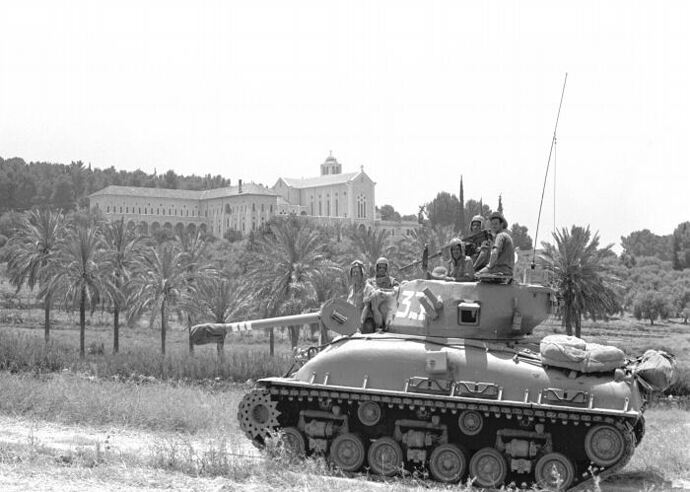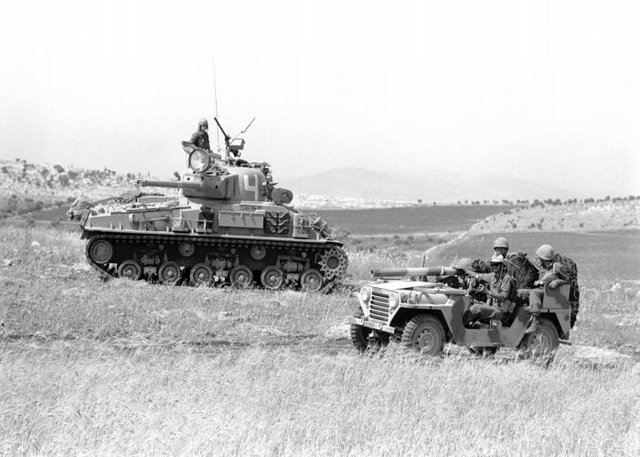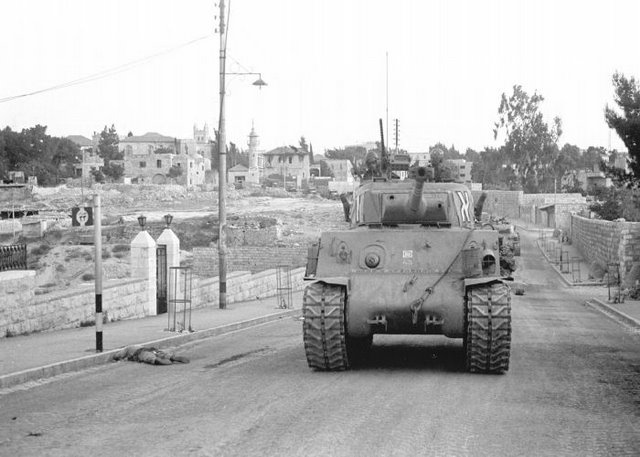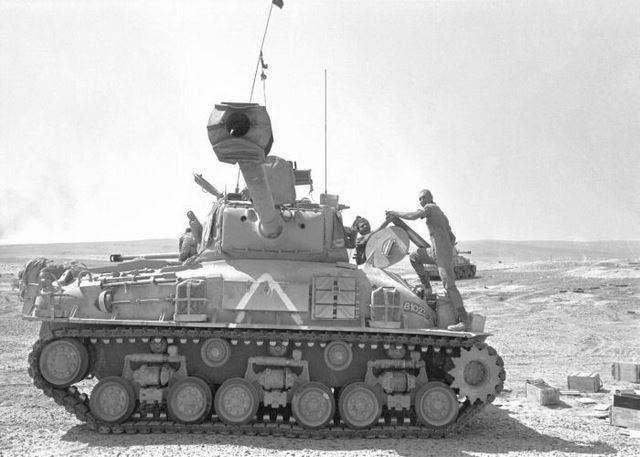The difference between so called Heavy and Medium tanks is more down to the countries design philosophy
France, Germany, Russia, America preferred lighter, faster thinner armoured tanks
so going for the
Gun, Manouverability, Armour triangle
Britain went for
Gun, Armour, Manouverability
Deciding that battlefield survivability/manouverability matter more than speed (tanks rarely fought while driving at max speed as although the gun may be fully stabilized the crew would not be)
Hence the more common term of Main Battle Tank in the West at least
On the Golan heights the ability of the Israeli tanks to depress their gun barrels further than the Syrians helped them ‘nothing to do with velocity, penetration, etc as if your gun cant depress sufficiently to target the opposition when climbing or defending hills you are not going to hit’
The Israeli tanks could fire from hull down positions when they gained the heights while the majority of Syrian tanks had to expose more of themselves so negating the benifits of having a smaller profile (T54/55/62 designed to fight in open country/plains type areas)
The T-62 has all the limitations of the T-55: cramped crew compartment, thin armor, crude gun control equipment (on most models), limited depression of main gun, and vulnerable fuel and ammunition storage areas. The automatic spent-cartridge ejection system can cause dangerous accumulations of carbon monoxide and possibly actual physical injury to the crew from cartridge cases projected against the edge of a poorly aligned ejection port and rebounding into the crew compartment. Opening the ejection port under NBC conditions would also expose the crew to contamination.
Each time the gun is fired, the tube must go into detente for cartridge ejection, and the power traverse of the turret is inoperable during ejection and reloading operations. Since manual elevation and traverse are rather slow and not effective for tracking a moving target, rapid fire and second-hit capabilities are limited. The turret also cannot be traversed with the driver’s hatch open. Although the tank commander may override the gunner and traverse the turret, he cannot fire the main gun from his position. He is unable to override the gunner in elevation of the main gun, causing target acquisition problems.
The T-55 is most effective against light to medium armor vehicles. The basic ammunition load for the main gun is 43 rounds. External fuel cells make the tank very vulnerable, as does its thin armor protection. The T-55 has a limited ability to depress the main gun, hindering the tank’s fires in defilade from high ground. In addition the gunner’s primary sight is slaved to the main gun, which does not allow the gunner to acquire targets in a hull-down posture.
Although the half-egg shaped turret of the T-55 has good ballistic qualities, it provides cramped working conditions for the crew, resulting in a slow rate of fire; and the protection afforded by its low silhouette (1 meter lower than the M60) is counterbalanced by its poor armor protection which is thin by western standards. By the same standards, its gun control equipment is also crude. It shares the disadvantage of most Soviet tanks in having limited ability to depress the main gun, thus not being capable of firing effectively from defilade and being forced to expose itself to engage targets. Ammunition and fuel are stored in vulnerable positions.
To my knowledge the T64 was never sold to any country and was only used by the Russians, the T72 was the export model for that era .





